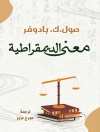Does human mortality after age 110 continue to rise, level off, or start to decline? This book describes a concerted, international research effort undertaken with the goal of establishing a database that allows the best possible description of the mortality trajectory beyond the age of 110. The International Database on Longevity (IDL) is the result of this ongoing effort. The IDL contains exhaustive information on validated cases of supercentenarians (people 110 years and older) and allows unbiased estimates of mortality after age 110. The main finding is remarkable: human mortality after age 110 is flat at a probability of death of 50% per year. The sixteen chapters of this book discuss age validation of exceptional longevity, data on supercentenarians in a series of countries, structure and contents of the IDL, and statistical analysis of human mortality after age 110. Several chapters include short accounts of specific supercentenarians that add life to demographic research.
قائمة المحتويات
General.- On the age validation of supercentenarians.- The International Database on Longevity: Structure and contents.- Country reports.- Supercentenarians in the United States.- The emergence of supercentenarians in Canada.- Supercentenarians in Japan.- Being very old in a young country: Centenarians and supercentenarians in Australia.- Supercentenarians in France.- Italian supercentenarians: Age validation of deaths from 1969 to 2000.- Emergence and verification of supercentenarians in Spain.- Age validation of persons aged 105 and above in Germany.- The growth of high ages in England and Wales, 1635-2106.- Supercentenarians in the Nordic Countries.- Research on supercentenarians.- Human mortality beyond age 110.- Is it possible to measure life expectancy at 110 in France?.- Age 115 or more in the United States: Fact or fiction?.- Jeanne Calment and her successors. Biographical notes on the longest living humans.












